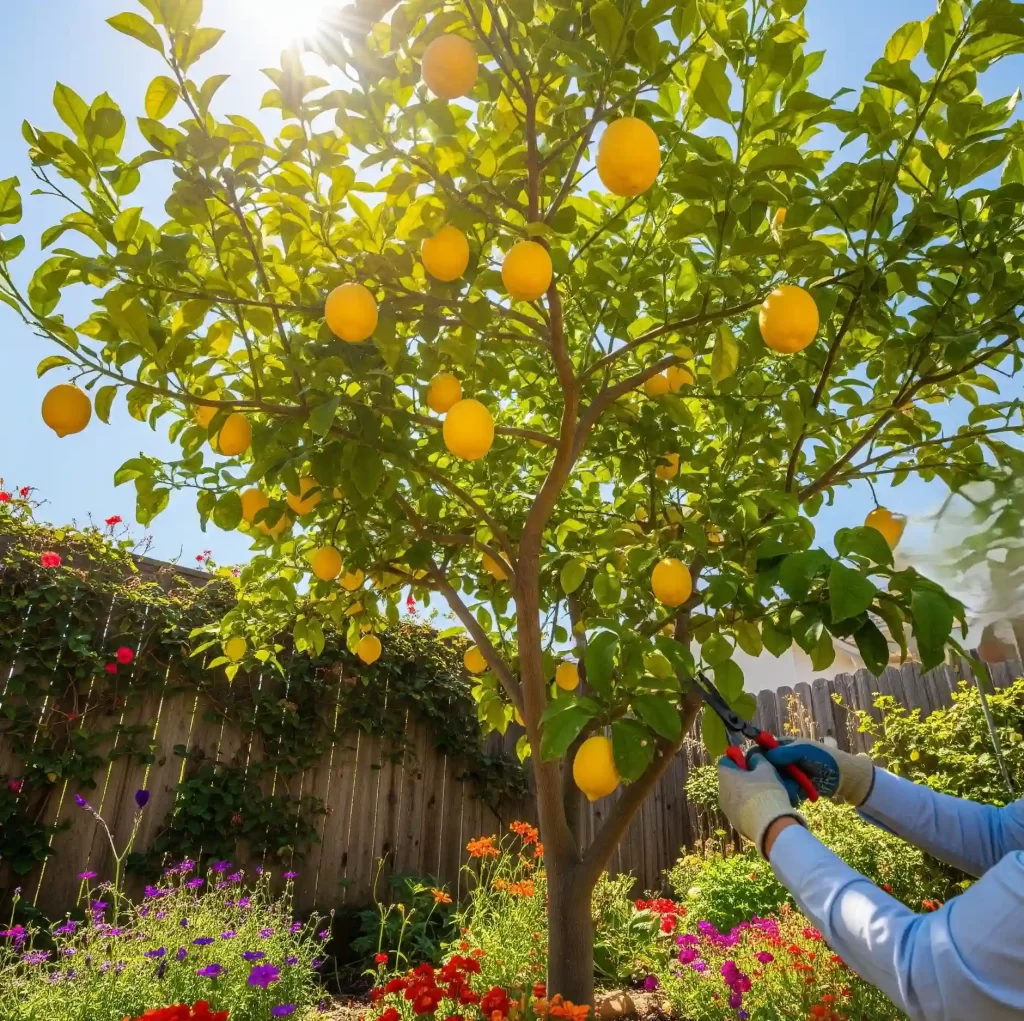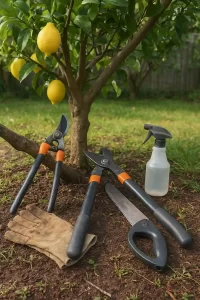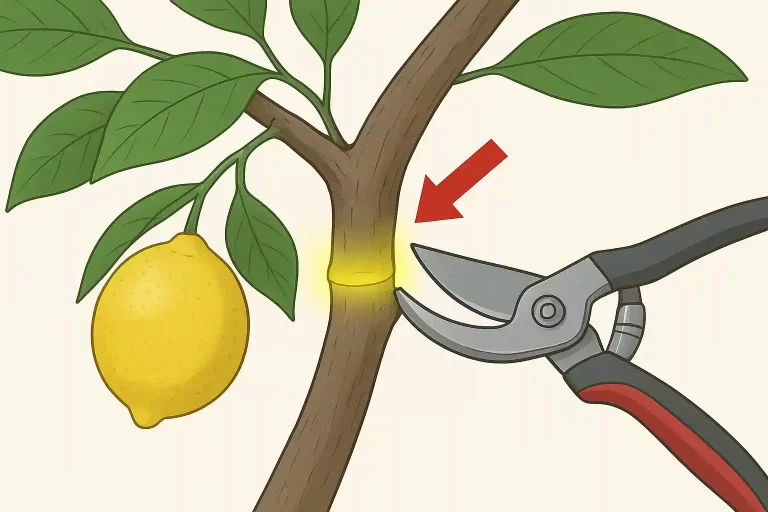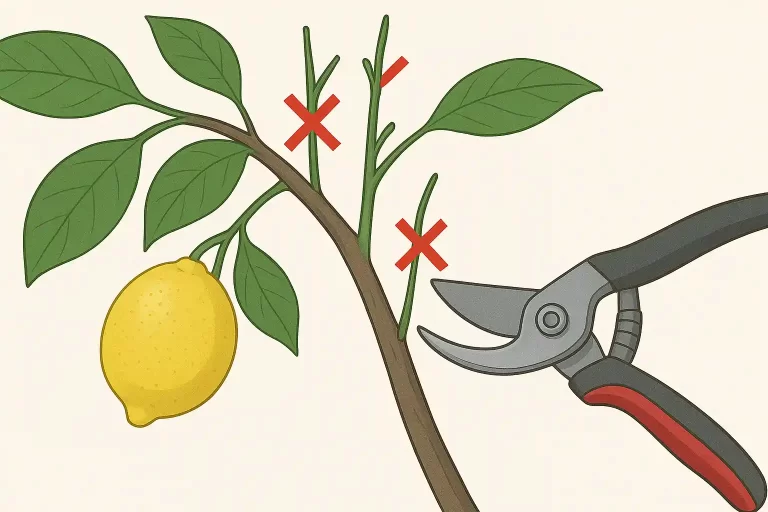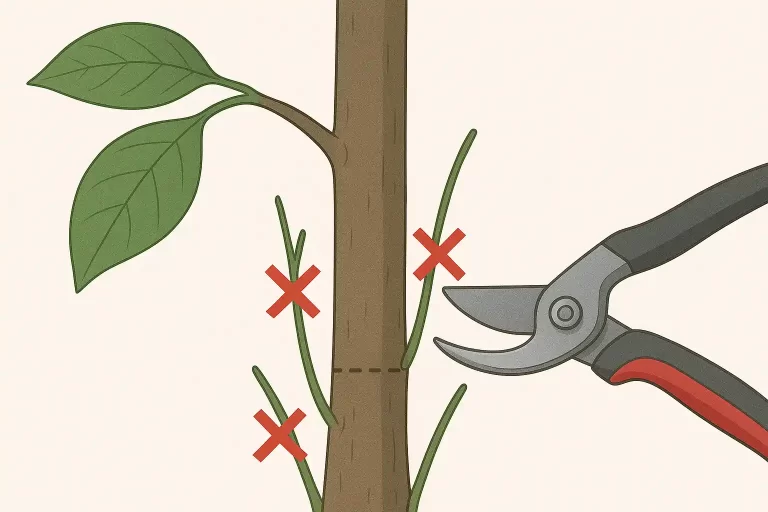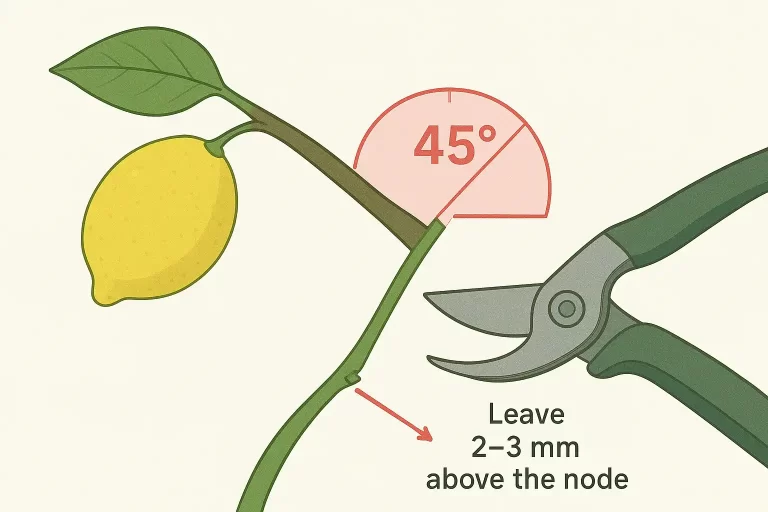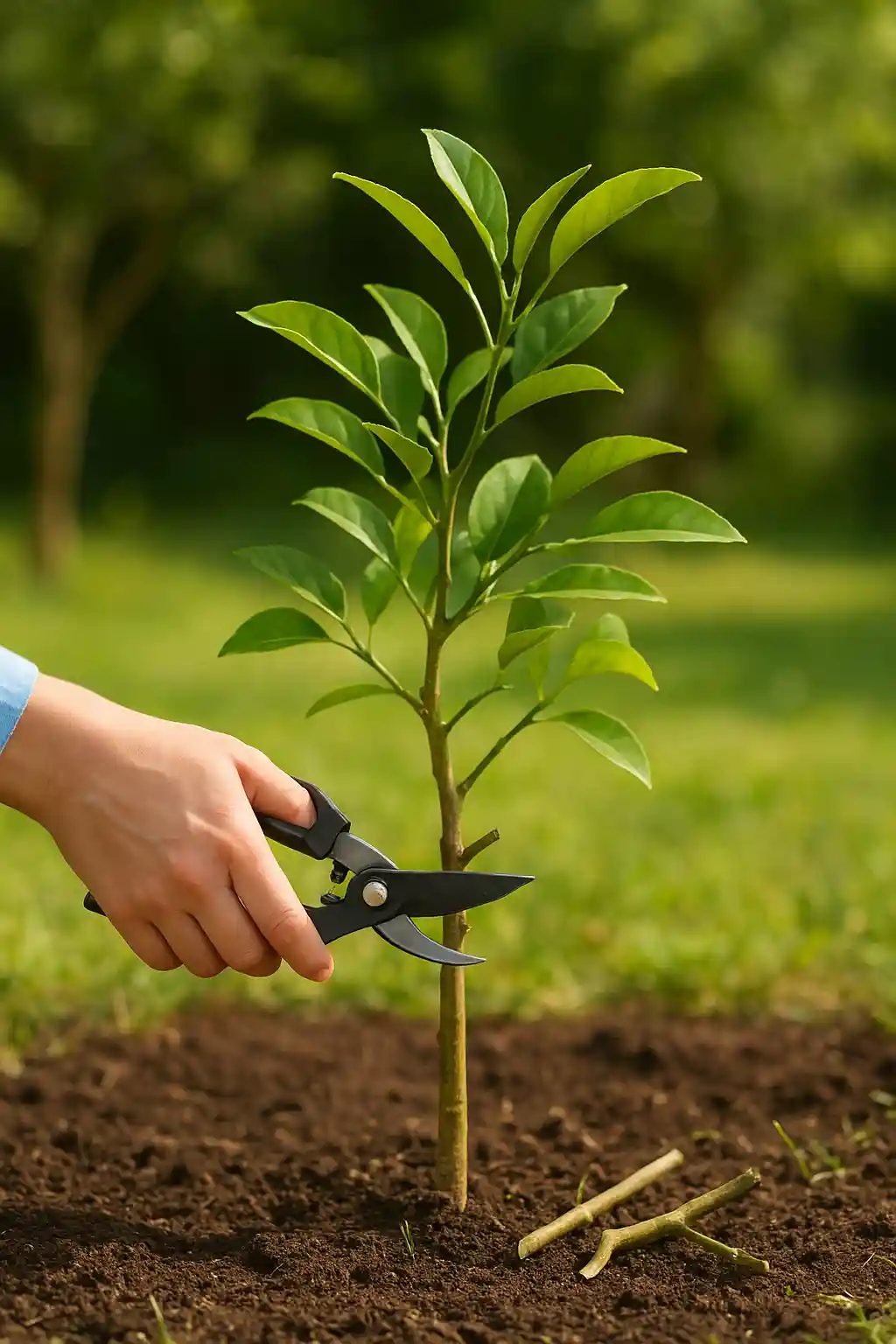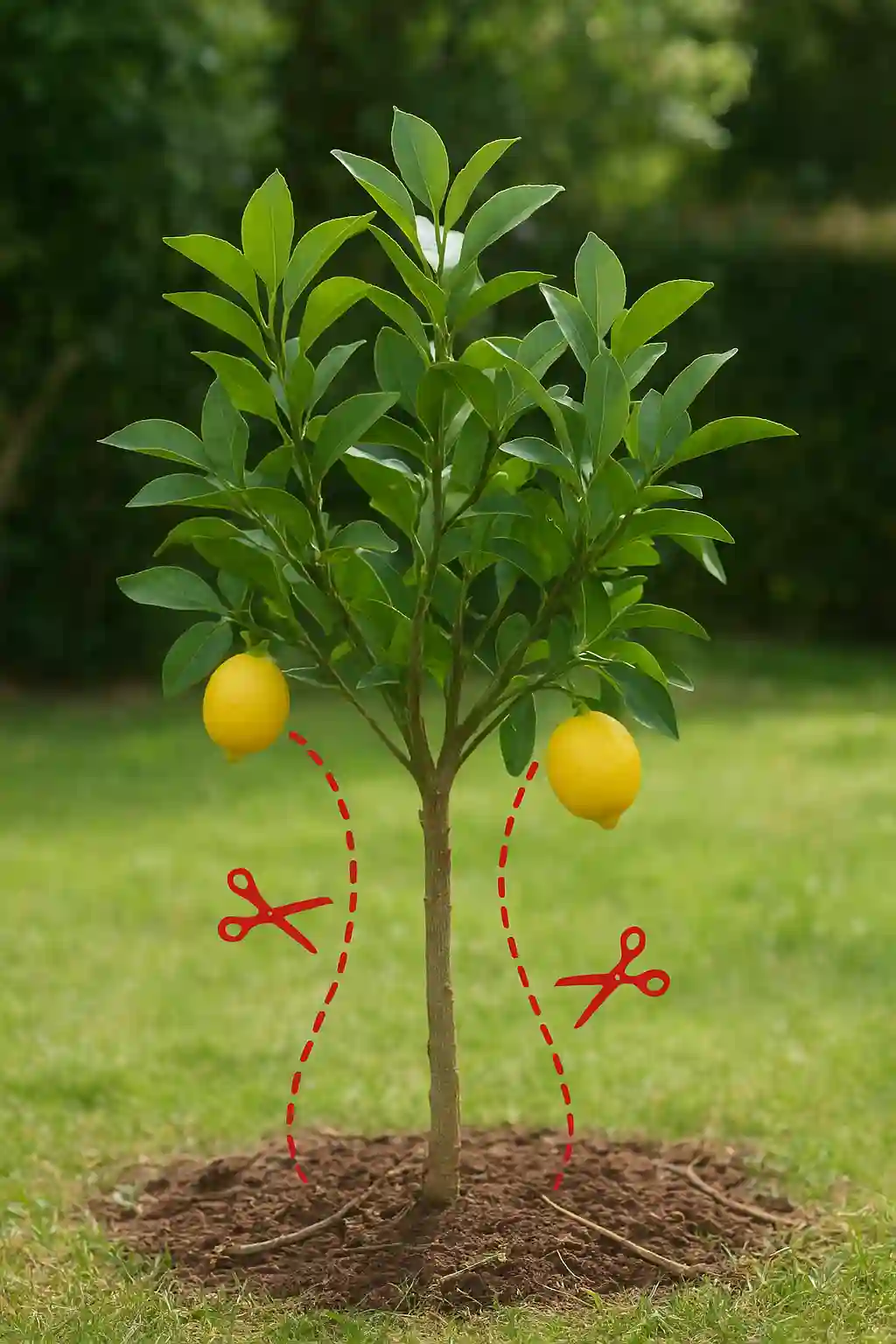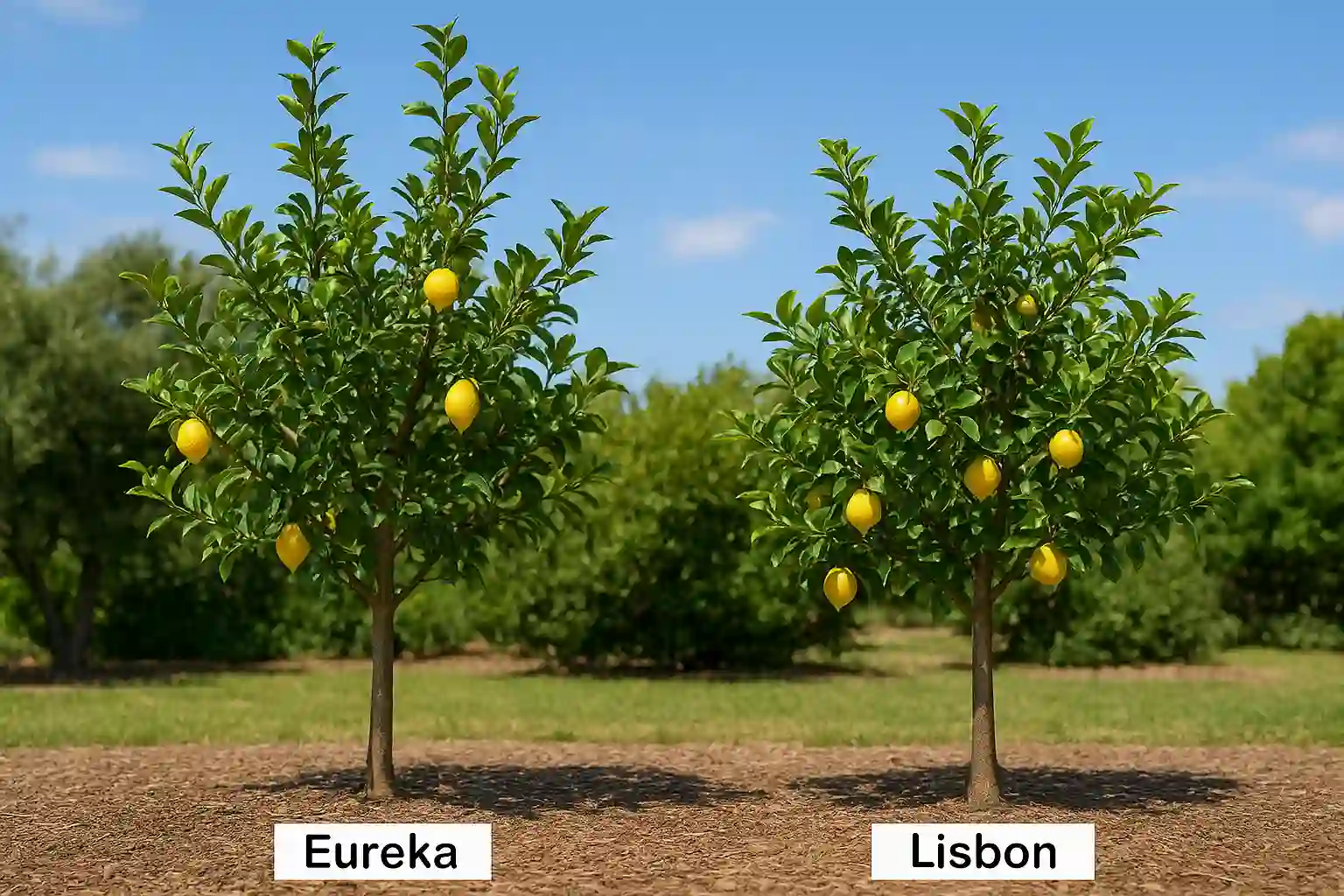Potted Lemon Tree Pruning
Keep container trees compact, airy, and productive.
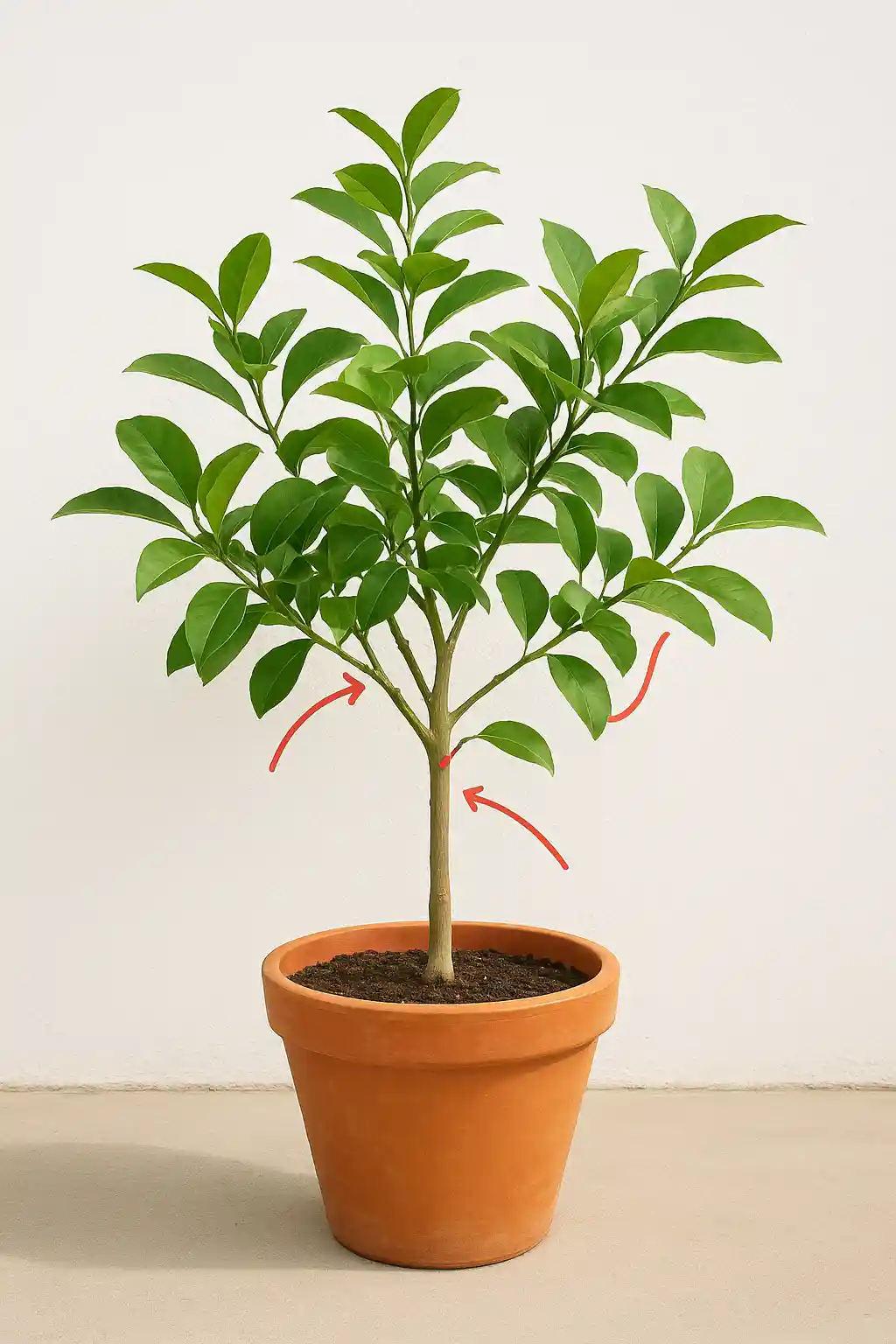
- 1Stop upsizing pots once the tree is about 4 feet tall.
- 2Remove all fruit before pruning so growth can refocus.
- 3Shorten fresh shoots by half, cutting above a healthy leaf node.
- 4Maintain airflow by keeping the center open.
- 5Pair top pruning with light root trimming during repotting.
